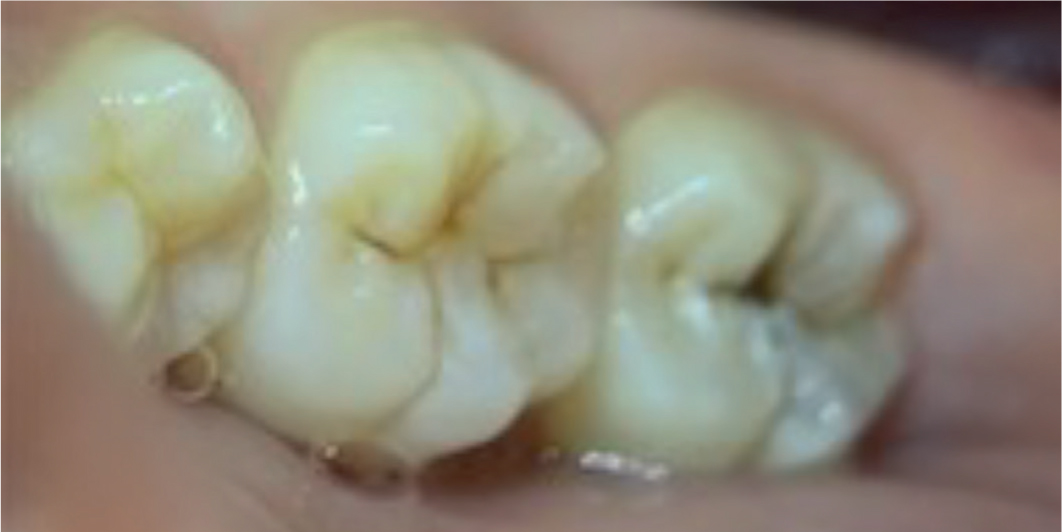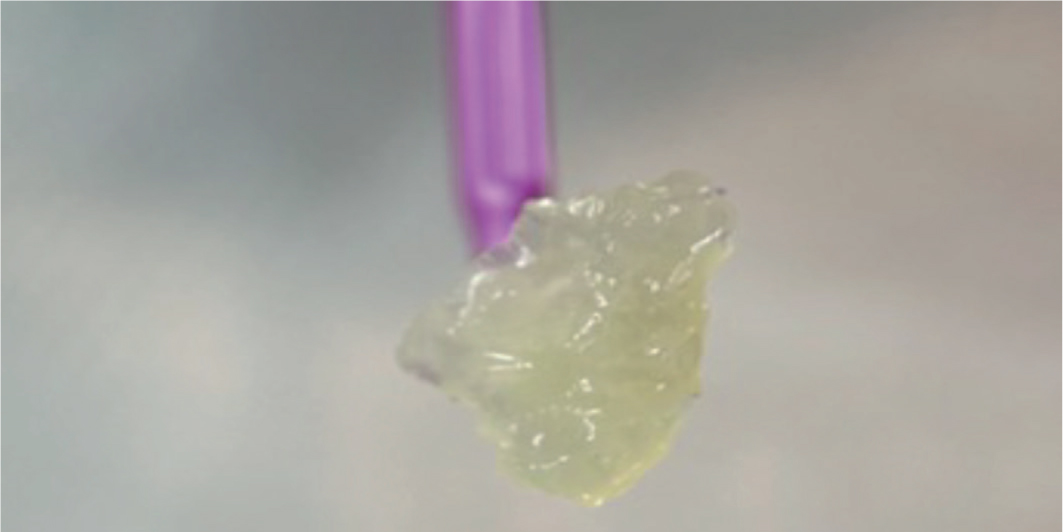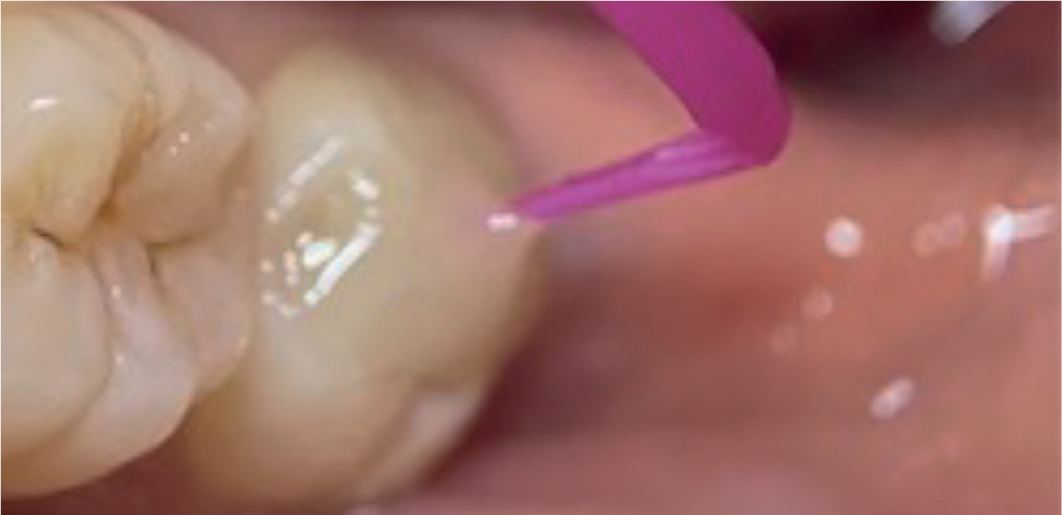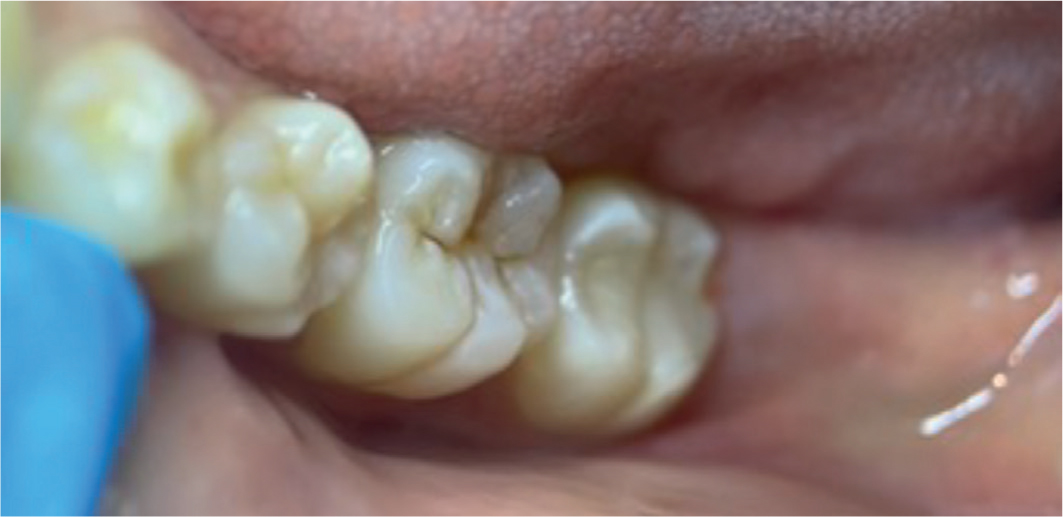Article
The occlusal matrix technique has been documented in recent articles.1 The technique aims to enhance the reproduction of the occlusal morphology and anatomy, along with the inter-occlusal relationship and functional contacts. It is commonly used for restoring occlusal caries lesions, which have been found to be one of the most prevalent sites for caries development in children and adolescents, mainly due to their anatomical susceptibility.2
The advantage of such technique is its simplicity, predictability and reduction in clinical time.3
Below is a case of occlusal caries present in the lower left second molar (Figure 1). The occlusal surface was slightly lubricated with Vaseline and then a flowable composite was applied on the occlusal surface into which a bristle brush was slowly immersed by 1–2 mm, and then light cured for 60 seconds (Figure 2).


This was removed and examined to ensure that the occlusal features had been cast (Figure 3), and then used as a matrix. The cavity was restored, and prior to curing the composite, the occlusal matrix was used to define the anatomical features and occlusal morphology (Figure 4).


The technique is very simple and effective. However, its limitations may be that when restoring posterior cavities, access and vision can be limited, more so if a more rigid composite, such as bulk fill, is used then the use of such a technique maybe compromised due to the lack of rigidity within the matrix. Overall, the technique is useful in suitably selected cases, and can prove to be effective with desired results.

